Appreciate the beauty of lacquer painting and screens
Screens appeared as special tools for the emperor in the Zhou Dynasty 3,000 years ago, as a symbol of status and power. After continuous evolution, screens have been used as windbreaks, partitions, and concealments, and have also served to embellish the environment and beautify the space. Therefore, they have been passed down to this day and have evolved into a variety of forms.
According to the material and craftsmanship, screens include lacquer screens, woodcarving screens, stone screens, silk screens, mica screens, glass screens, glazed screens, bamboo and rattan screens, metal screens, inlaid enamel screens, inlaid magnetic screens, etc. Screens made with different craftsmanship have their own merits. Jade inlay screens have clear layers and are exquisite; gold lacquer and painted screens have bright colors and are as brilliant as brocade; carved and filled gold screens have smooth lines and are magnificent; carved gray and smooth screens have sharp blades and rich charm. Among them, the large category of lacquer screens generally use pine wood as the frame, which is stable and not easy to crack or deform. Some high-end screens have lacquered carved paintings on the screen surface, and the frames are made of high-end wood such as red sandalwood and rosewood.
Lacquer Screen
appreciate
Qiao Shiguang
Since 1985, Qiao Shiguang has made more than a dozen screens in a modern and concise style, which is a clear break from the traditional court art concept of "materials only" and "craftsmanship only".
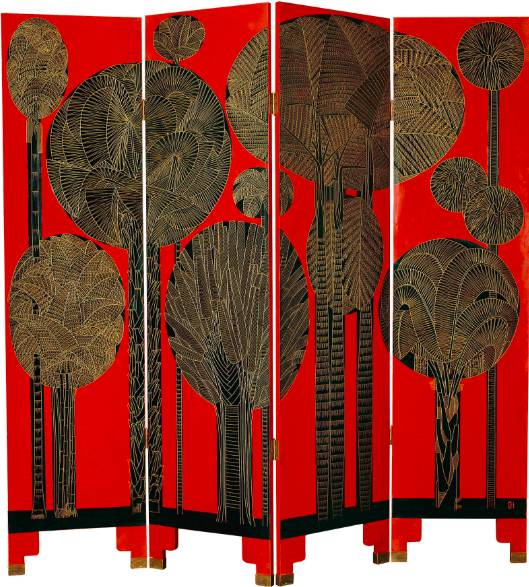
"Southern Wind" Folding Screen 180×180cm 1985
This is a composition composed of southern tropical plants, which summarizes the crowns of trees of all sizes into circles, and the trunks are all upright. Carefully considering the influence of plant shapes and spatial shapes, this work, which pays great attention to formal beauty, is not only national, but also modern.
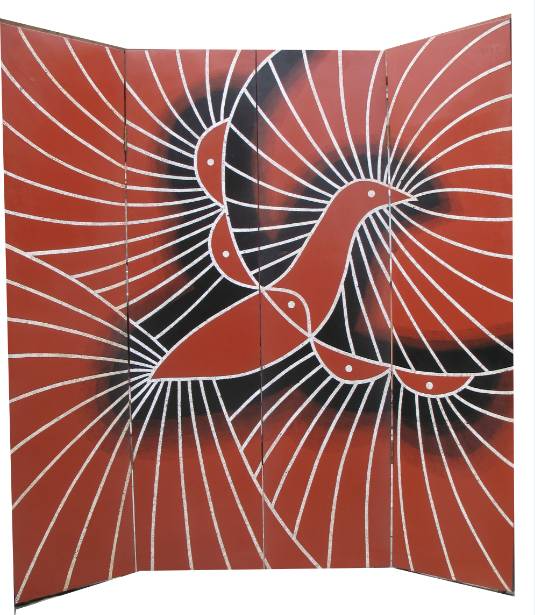
Sunbird, 180×180cm, 2000
This is a screen designed with reference to folk paper-cutting and embroidery. The three colors of black, white and red, and the three materials of lacquer, eggshell and silver vermilion, produce a simple and bright effect.
The black part has a gradient effect, which is created by using black lacquer powder, with some sparse and some dense.
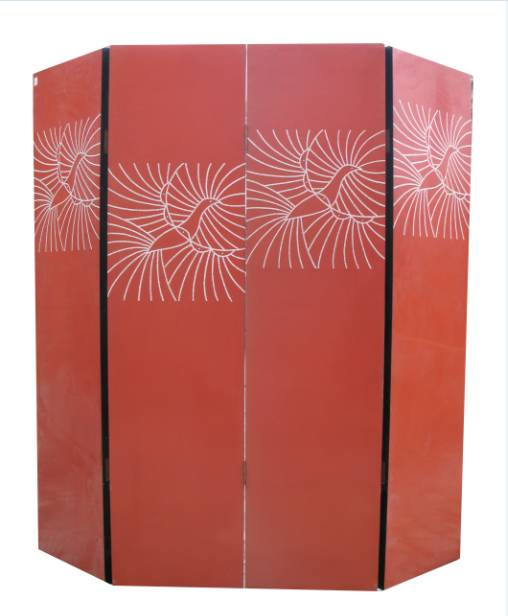
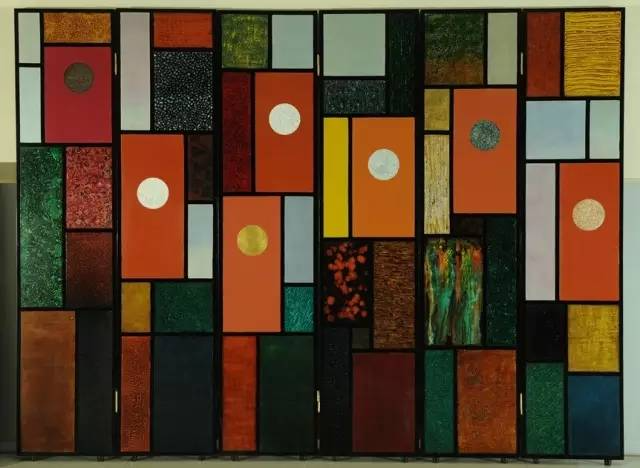
"Colorful Big Dipper" 180×240cm 2011-2012
On the front of the screen, the Big Dipper is represented by dots made of gold, silver, shells, eggshells and other materials, and is complemented by color blocks made with various lacquer techniques to form colorful divisions, like "stars surrounding the moon", highlighting the Big Dipper.
On the back of the screen, there is a seven-character poem by Wang Wei written in cursive script.
So,
What is the history of screens?
What did ancient screens look like?
Warring States Period
It has become common
The origin of screens is very early. They were used in the early Western Zhou Dynasty. However, there was no word for screen at that time. They were called "di". "Zhou Li·Zhang Ci" records: "set up the emperor's residence". The emperor's residence is a screen used exclusively by the emperor in the Zhou Dynasty. It is made of wood as a frame, covered with crimson silk, painted with axe patterns, with the axe near the blade painted in color and the rest painted black. It is a symbol of the emperor's status and power.
Screens were originally used to block wind and provide shade, but as they became more common, their varieties increased. By the Spring and Autumn Period and the Warring States Period, screens were widely used, and exquisite table screens appeared. In the Han Dynasty, screens became more common, especially lacquer screens, which were exquisite furniture that only the rich could own and enjoy.
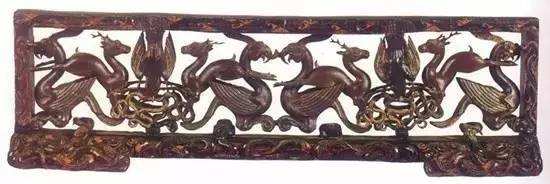
A small lacquered wooden screen from the Chu State during the Eastern Zhou Dynasty.
It was completed before 334 BC.
Unearthed from Chu Tomb No. 1 at Wangshan, Jiangling, Hubei Province
In 1965, a small lacquered wooden screen from the Chu State of the Eastern Zhou Dynasty was unearthed from the No. 1 Chu Tomb at Wangshan, Jiangling, Hubei Province. The base has two ends touching the ground, and the middle is suspended like a bridge, supporting an exquisite low screen. The screen is surrounded by a rectangular frame. The animals carved on the screen form a continuous pattern, including four phoenixes, four birds, four deer, two frogs, fifteen small snakes, and twenty-six pythons, a total of fifty-five animals.
This small painted wooden screen is symmetrical, well-balanced and beautiful. It is hollowed out on the top and whole on the bottom, dignified and steady. The craftsmen of the Chu State used the technique of interweaving openwork and relief to depict 55 animals interlaced and fighting with each other, with various and regular movements, and vivid diving and running postures, which highly condensed a vibrant scene in nature. The screen is painted in vermilion, gray-green, gold, and silver, which is gorgeous and eye-catching. It is an outstanding representative of openwork and painted lacquerware works in the Spring and Autumn Period and the Warring States Period.
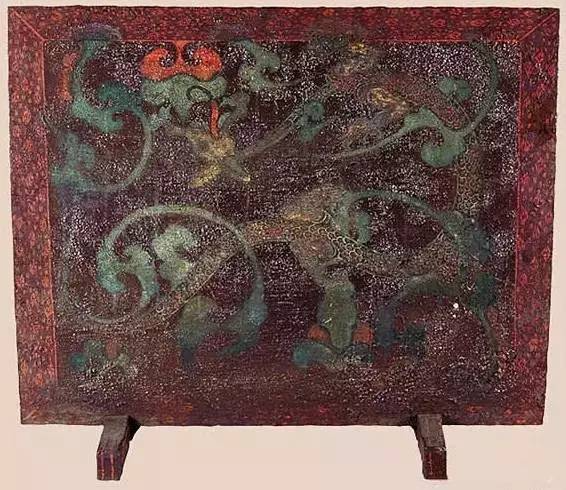
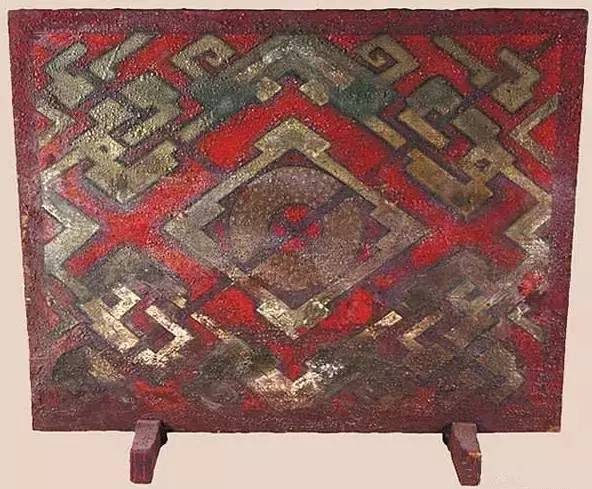
Lacquer screen with cloud and dragon pattern
Western Han Dynasty (made around 168 BC)
Height 62 cm, length 72 cm
Unearthed from Mawangdui Tomb No. 1 in Hunan
Hunan Provincial Museum Collection—front and back
A lacquer screen with cloud and dragon patterns from the Xihou Hall of the Western Han Dynasty was unearthed in Mawangdui Tomb No. 1. It was made of wood, with a black screen body and a red back. On the front of the screen, a giant dragon was painted with red lacquer, with scales and claws painted in red. The frame was decorated with red diamond patterns, and the body was vivid and natural. On the back of the screen, geometric square patterns were painted with red, and the center was painted with light green oil paint with valley patterns. The surrounding board was surrounded by a wide prismatic colored border. There was a pair of feet under the screen to support it, which played a role in ensuring that the screen body stood upright. From the relatively rough craftsmanship and small size, it can be inferred that this screen was a special funerary object for burial.
Screens are also used as a
A symbol of status and authority
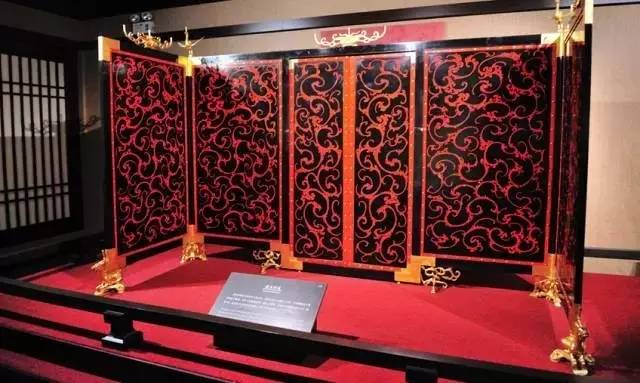
A replica of the screen from the tomb of Zhao Min, the second king of Nanyue in the early Western Han Dynasty, at Xianggang Mountain in Guangzhou
The Nanyue Kingdom, a vassal state of the Western Han Dynasty, was an independent state in the Lingnan region from about 203 BC to 111 BC. The second king, Zhao Xun, was buried in 122 BC and was the second monarch of the Nanyue Kingdom. The screen unearthed from his tomb is different from other small movable screens that appeared earlier. It is huge and always accompanied the tomb owner during his lifetime. The main chamber of the tomb has a coffin and a coffin of the Nanyue king. The screen is located on the east side of the main chamber. Next to it is the east side chamber, where the four wives of the tomb owner were buried alive. The exit of the side chamber has been blocked. The only entrance to the side chamber is a mechanical door hidden in the screen, which can only be entered by the tomb owner, the Nanyue king.
Lacquer Screen
Ming and Qing Dynasties
In the Ming and Qing Dynasties, screen culture reached a new peak. It is particularly important to emphasize that rosewood screens came into being at this time and emerged as a new force. In terms of material application, there are two main categories. One is the wood-carved rosewood screen made entirely of red sandalwood, huanghuali, and rosewood. The wood carving techniques include deep and shallow relief, hollow carving, and round carving. The other is the rosewood frame with lacquered carvings on the screen surface. The types and quantity of screens are also unprecedentedly rich.
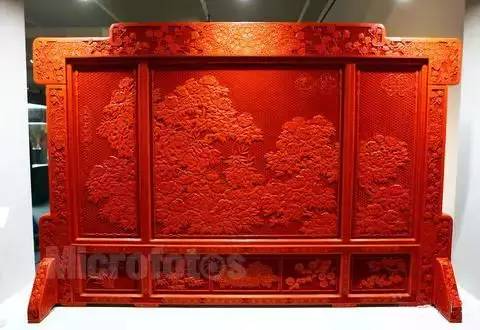
Carved lacquer screen
According to records, among the confiscated property of Yan Hao, a treacherous official in the Ming Dynasty, there were as many as 389 screens of various sizes. In Dream of the Red Chamber, there are also many descriptions of screens of various shapes, materials and crafts. For example, when describing the 81st birthday of Jia's mother, Jia asked, "How many of the families who sent gifts the other day had screens?" Feng Jieer said, "There are 16 screens in total, one of which is a gilded 'hundred years of longevity' picture."
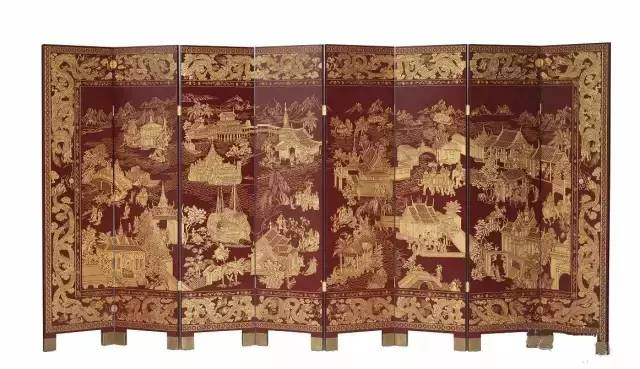

(Thanks: The pictures and texts are from Qiao Shiguang Art Museum )
----- advertise-- ---
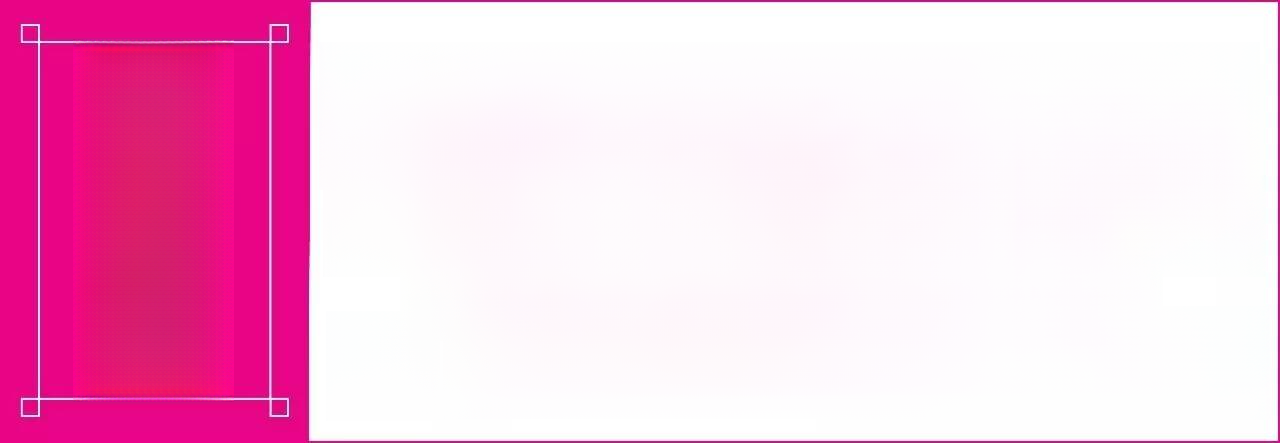
▲Click on the picture above to learn more about the course and participate▲